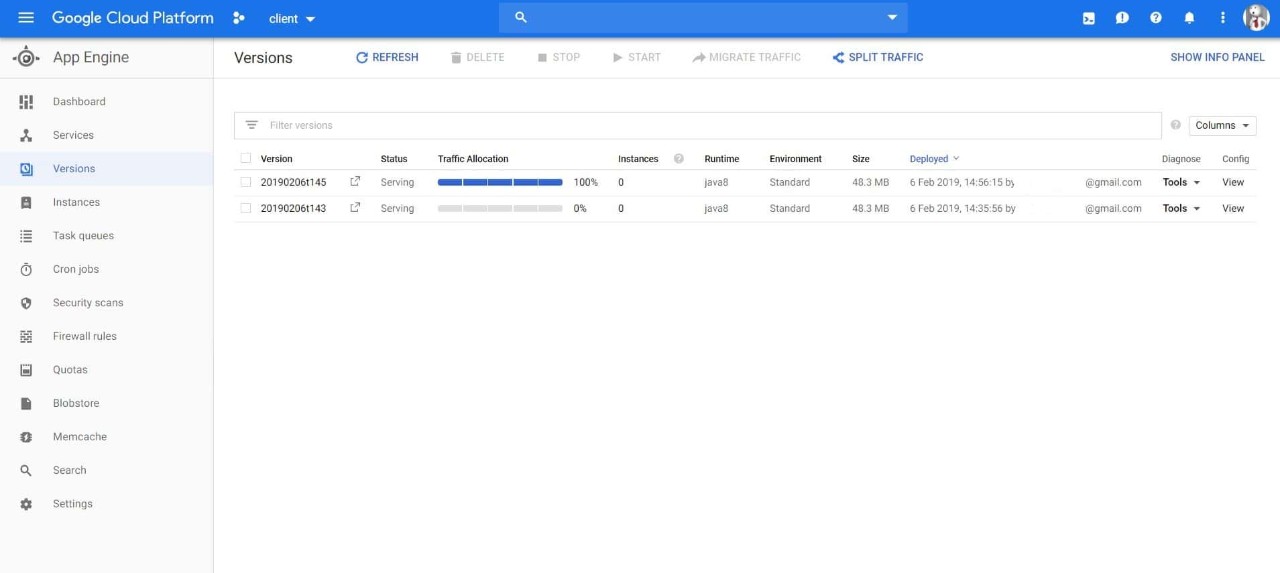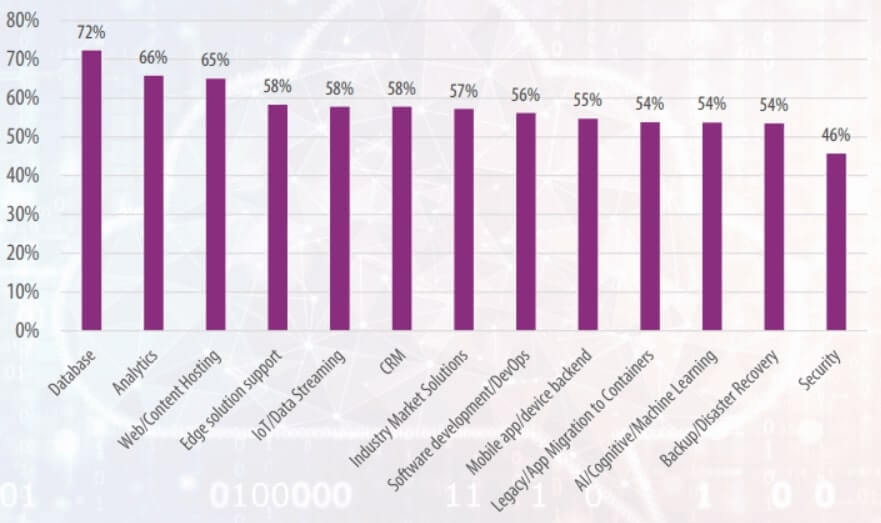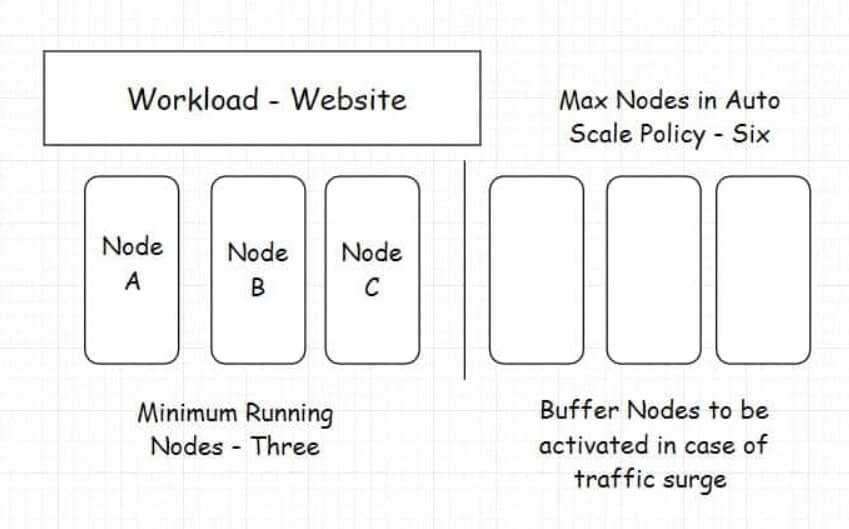Over the last decade and a half, cloud technology has increasingly permeated not only IT operations but also business models. It has moved from being a “disruptive” technology to being a “fundamental” or “staple” one.
“Cloud adoption will continue to accelerate as key workloads are needed to support remote workers and maintain data center operations,” said Ed Anderson, Distinguished VP Analyst at Gartner, during his presentation at the Gartner IT Symposium 2020.
That word there that’s full of possibilities – and pitfalls – is “workload.”
In computing, a workload simply started out by meaning any program that runs on a computer or the work done by it. But in a world increasingly powered by technology, it has become loaded with meaning.
At its core, it is a computer system’s ability and way of processing input and giving output. Viewing and editing a photo on a laptop requires the computer to process software instructions. That is a workload. Every time someone googles something, a workload is processed by a data center, resulting in a set of links on the screen.
Simply put, a workload is about “putting elements together to get data, finding out what something means or developing something,” said Judith Hurwitz, president and CEO of Hurwitz & Associates and author of Cloud Computing for Dummies. “It’s fundamental to computing.”
A cloud workload, then, is an application, service, capability, or a specified amount of work that consumes cloud-based resources (such as computing or memory power). That makes databases, containers, microservices, VMs, and Hadoop nodes all cloud workloads.
The great thing about cloud workloads is that every time they are deployed, a new version is created, enabling more resiliency and portability.

Source: ScaleYourApp.com
Cloud workloads come in many flavors and sizes. What’s important is what they’re doing and what they enable organizations to do.
Which Workloads Are Ideal for the Cloud?
As more aspects of business and everyday life become digitized or “cloudified,” the number of cloud workloads is skyrocketing. “A cloud workload could be anything from a system running analysis on field samples on an oil rig to a transactional database handling order management for a business,” said Steven Poitras, original author of The Nutanix Bible.
Gartner recommends that organizations prioritize moving these key workloads to the public cloud right away:
Mobility: Mobile devices and apps facilitate remote working to a great extent. The adaptive cloud model is the ideal backend for mobile solutions.
Collaboration and content management: Work today is unimaginable without Microsoft Office 365 or Google Workspace. This is testimony to the suitability of the cloud to office productivity applications.
Videoconferencing: As a result of the pandemic, this remote meeting enabler is now a core operational function. Hyperscale cloud providers can reliably deliver videoconferencing solutions, given the variable networking bandwidth requirements.
Virtual desktops and remote workstation management: A reliable VDI is key to enabling remote work. Cloud-based virtualization and DaaS have now become mainstream and provide a scalable and secure alternative to traditional data center-based solutions.
Disaster recovery: Cloud-based DR is cost-effective and secure. It also saves organizations the cost and headache of maintaining redundant production-quality infrastructure at a different location.
At the moment, however, the most popular workloads across public, private, and hybrid clouds are databases, analytics, and web/content hosting.

Source: TECHnalysis Research
“For businesses and organizations relying more on data and technology, it’s critical to have cloud infrastructure in place or leverage cloud services that manage compute, storage, and networking effectively and efficiently,” said Steve McDowell of Moor Insights & Strategy.
The challenge lies in managing these disparate cloud services as a whole. A unified hybrid and multicloud environment might consist of multiple workloads that operate across a combination of public cloud and on-premise infrastructures. This is where organizations should look to vendors who deliver a complete cloud management strategy that spans storage, compute, and networking.
Types of Workloads in the Cloud
In order to decide whether workloads would be best-suited to private, public, or hybrid cloud environments, it’s necessary to classify them based on their architecture, resource needs, and usage patterns.
Cloud workloads can be categorized by resource needs as follows:
General compute: Workloads that don’t have specific computational needs and typically run on the default configuration of the cloud. These include common web apps, web servers, distributed data stores, and containerized microservices.
CPU-intensive: Workloads that have high compute requirements and handle a large number of concurrent users. These include massively multiplayer online games and deep learning applications that need to perform processor-intensive ops such as video encoding, analytics on big data, 3D modelling, etc.
Memory-intensive: Workloads that need memory and processing power to execute millions of transactions per second. These include real-time streaming data, caches, and distributed databases.
GPU-accelerated computing: Some workloads such as speech recognition, self-driven vehicles, navigation systems, computational fluid dynamics, seismic analysis, and so on have super-high processing requirements. These need the power of GPUs along with CPUs to perform real-time tasks.
Storage optimized: Workloads such as in-memory databases, highly scalable NoSQL databases, and data warehouses
More important are workloads based on their availability and the traffic they get. Cloud workloads can be classified by usage patterns as follows:
Static workloads: The resource requirements, demand, and uptime are fairly known. These include core enterprise services like CRM, ERP, and email.
Periodic workloads: These face traffic spikes at specific times of the day, week, month, or year. Examples include bill payment or tax and accounting tools. Serverless computing, where users don’t pay for ideal instances, is ideal for these workloads.
Unpredictable workloads: Popular applications and platforms like social networks, online multiplayer games, video streaming sites, etc. can see their traffic increase exponentially within no time. The auto-scaling ability of clouds can handle such spikes by dynamically adding instances as and when required.
“The importance of workloads will always vary based upon the context, like who’s being affected,” said Poitras. “However, from a business perspective, anything that hits the top line is definitely a higher priority vs. items of convenience.”
Weighing the Pros and Cons of Running Workloads in the Cloud
The cloud is extremely attractive for projects that need to be spun up quickly or those that have a limited life cycle, according to McDowell. “Moving them to the cloud delivers flexibility,” he said. “You can provision infrastructure, whether storage, compute, or networking, with the press of a button. Payment for public cloud services is based on usage, not capital investment.”
In addition to scalability, cloud environments also have the advantage of being highly distributed. This increases the efficiency of the workload.
“It doesn’t just sit on a server somewhere and crank along and do what it has to do,” said Hurwitz. “The workload may move into the platform or service that is best to execute at the right speed.”

Source: ScaleYourApp.com
In fact, when a service is referred to as a workload, its portability and abstraction of the underlying architecture are assumed. Enabled by containerization, most cloud workloads can be moved between different cloud platforms or from on-prem to the cloud and vice versa without breaking anything.
However, not all workloads are suited to the cloud. Data and privacy regulations as well as performance issues can complicate cloud-based workloads, requiring some data to remain in specific parts of the world.
“Not all workloads should run in the cloud,” declared Hurwitz. “Some workloads can only live in certain geographies due to compliance issues,” she explained. “Or if you need to accomplish something faster, that workload should execute its function very close to the source of the data because you don’t want latency.”
Deploying to the cloud can be deceptively cheap, but the long-term value might not be there. Many times, enterprises suffer due to their lack of upfront analysis and end up repatriating workloads from the public cloud back to hosted on-prem environments, HCI, or data centers.
So it’s important to assess the suitability of workloads across different cloud models, on-prem, and data centers.
Workload as a Service
Workloads are always evolving. Along with that, the way they are deployed and the way they consume services also change. Gone are the days where IT practitioners would manually layer storage, servers, and software together for each workload. Today, intelligent software can assist in both provisioning and adapting infrastructure to workloads as needed.
“We can now consume CRM or ITSM as services delivered by a vendor,” said Poitras. “In this case the service stays the same, however, where the workload will run is what changes.” The -as-a-Service nature of cloud computing makes it simpler for IT teams to both consume as well as run these services.
“It makes perfect sense to consume some workloads as services and push the burden to the vendor,” he continued. “However, for others, it may make the most sense to keep workloads running internally on-prem or hosted in the cloud, depending on the level of customization or concerns around data gravity and privacy.”
Knowing how and where to run workloads is more complex than ever, but cloud gives IT an opportunity to think differently. Increasingly, there’s more flexibility and choice, and software innovation keeps racing to simplify the complexity.
“Machines can manage the more burdensome efforts,” mused McDowell. “That allows the rest of us IT folks to focus on more interesting problems.”
Dipti Parmar updated this article, which originally appeared September 25, 2019.
Stephanie Vozza is a contributing writer who specializes in business and productivity. She is a columnist for Fast Company and her byline has appeared in Inc., Entrepreneur, and Success magazines. Find her on Twitter @StephanieVozza.
Dipti Parmar is a marketing consultant and contributing writer to Nutanix. She writes columns on major tech and business publications such as IDG’s CIO.com, Adobe’s CMO.com, Entrepreneur Mag, and Inc. Follow her on Twitter @dipTparmar and connect with her on LinkedIn.
© 2021 Nutanix, Inc. All rights reserved. For additional legal information, please go here.




